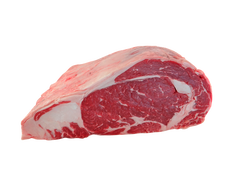Meat, meat or other edible parts of animals (in general cattle, pigs and sheep) that are used as food, including not only muscles and fat, but also tendons and ligaments.
Meat is seen as a complete protein food that contains all the amino acids required for the human body. The fat of meat, very different from the type, quality and the cut, is a precious energy source and also influences the taste, the Jules and the tenderness of the lean meat. Parties such as liver, kidneys, hearts and other portions are excellent sources for essential vitamins and minerals that are easily absorbed by the human system.
The meat is digested a little slowly, but 95 % of the meat proteins and 96 % of the fats are digested. Fatese tend to slow down the digestion of other foods; Therefore, meat with an appropriate fat content remains in the stomach longer, delays hunger and gives it "resistance". The extracts from the meat cause a saliva flow and stomach juices, what to eat and ensure good digestion.
The most consumed meat is beef, beef, beef meat for adults, which usually weighs from 450 to 540 kg from £ 1,000 to £ 1,200 and produces 55 to 60 % of its meat weight. The calf, the meat of the beef calves, is much less fat than the beef.
Pork is the second world supplier of meat. When pigs are brought into the slaughterhouse, they generally weigh between 200 and £ 300 (90 and 135 kg) and deliver about 70 to 74 % of this meat weight.
Lamb and sheep meat are made on a much smaller scale than beef or pork (for example, less than a tenth of it that was produced by cattle). They generally weigh between 100 and 150 pounds (45 to 70 kg), although the best lambs do not weigh more than £ 30 to 40 (14 to 18 kg) and give about 48 to 50 % of their meat weight.
The meat is marketed as fresh or processed products or an ingredients in various meat products, including many types of sausages and cold slices. They also produce a number of significant by -products.












No comments